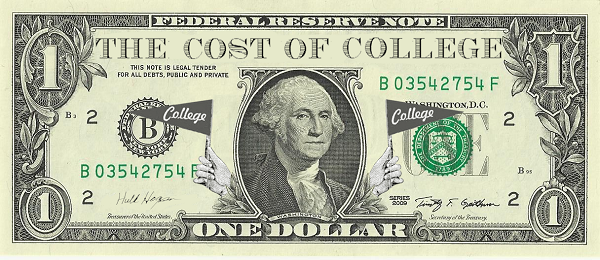Students deal with lengthy college applications process

February 2, 2016
As spring approaches, students around the country anxiously await college decision letters. In the midst of this angst, even more anxious parents await the arrival of financial aid packages from universities, federal aid, and private institutions. With tuition costs increasing, and the seemingly insurmountable college costs quickly approaching, the mere cost of even applying to college is often lost and forgotten. However, this is not a cost that should, or can be, overlooked for many college hopefuls.
For any student or parent researching college options to any extent, U.S. News and World Report has become a household name. Their extensive database of college information and rankings does not stop short of application fees. Their 2015 compilation of rankings included rankings of the country’s most expensive application fees.
“The average application fee was $41, according to the 1,068 ranked colleges reporting data to U.S. News in spring 2015. Among these schools, the most common fee charged was $50,” said Susannah Snider on behalf of the U.S. News and World Report.
According to the report, the most expensive application fee was for Stanford University, ringing in at $90. It was followed by Columbia University and Duke University, both of which charged an $85 application fee.
“These fees can add up quickly for college hopefuls, who are submitting more applications than ever. In fact, 32 percent of fall 2013 freshmen completed seven or more applications,” said Snider.
To even reach the point of application, however, a large majority of colleges and universities require an official standardized test score, either from the ACT or SAT. Both tests are offered with and without writing sections, which does lower their overall cost. The ACT costs $56.50 with the writing section, and $39.50 without. The SAT is almost identical in cost, $54.50 with the writing section and $43 without. However, both tests also charge a “late fee” to students who register after a certain deadline – $25 and $28 for the ACT and SAT, respectively.
Beyond just taking the test, many students find unexpected financial burden when they have to send their scores to schools. Both tests will allow scores to be sent to four schools for free, but anything after this threshold there begins to be a cost. The ACT costs $12 for each additional score report, and the SAT $11.25.
Even more hidden fees come into play with these exams when students cancel an exam, change a test date, or feel the need to take extra classes to prepare for the tests with a private tutor.
“Then there are college visits. The visits themselves are free, and some colleges even waive their application fees for students who come to take a look. But the cost of getting to a campus can vary widely, from the price of subway fare to a tank of gas, or even plane tickets for two or three family members and a hotel stay,” said Kelley Holland, a writer for CNBC, in a Personal Finance article.
Much like the ACT and SAT, taking AP tests, and sending AP exam scores is often an unexpected cost for many students. While a score of 3,4,or 5 warrants potential college credit, the cost of each exam in 2016 is $92, a figure that increases a dollar or two each year. Unlike the ACT and SAT, however, AP scores can only be initially sent to one school for free. Each additional score report costs $15, and rush processing costs $25.
As the necessity for many of these tests will remain constant, so will the inevitable shock that their financial burden brings. When preparing for the burden of college costs, it is important that students and parents alike don’t forget how they’re going to get there.






